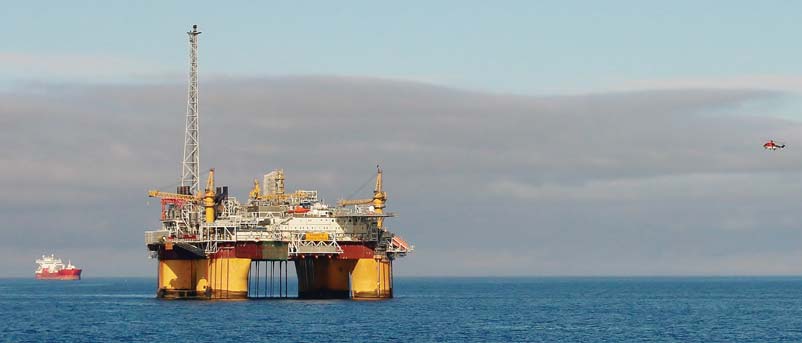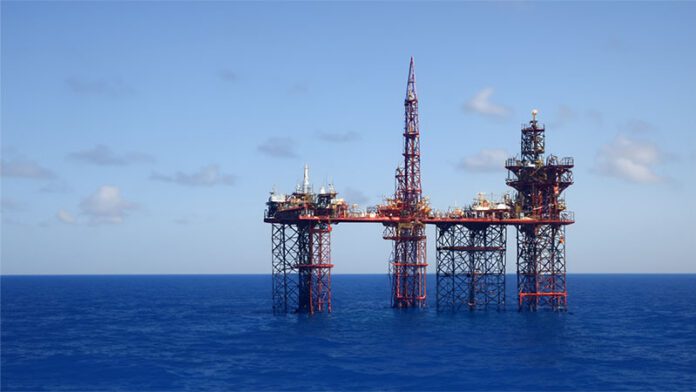Norwegian operators benefit from advanced supply chain management, provided by Offshore Norge.
Alexandra Kist, Valve World
After completing his MSc in Supply Chain Management, Tormod Tønnesen worked in several jobs before settling into offshore logistics for the oil and gas industry in 2009. His roles since then have focused on overseeing the supply chain and running the logistics operations for offshore oil and gas operators. In 2016, he joined Offshore Norge: a company that carries out tasks and services on behalf of the Norwegian offshore operators who pool some services to achieve economies of scale and assist each other when needed.
“Offshore Norge is a member organisation governed and funded by operators. The products and services we provide for members represent the entire supply chain and often include tailor-made services. Our members are not looking for short-term profits, but rather long-term improvements of processes, costs, efficiencies, framework conditions etc.,” he explains.
Offshore Norge

As Manager Supply Chain and Logistics, Tormod’s job requires a degree of flexibility as not all operators have the same needs. Some of the smaller operators in Norway are major players globally, while some of the large ones focus on Norway alone. “We are always weighing global and local perspectives. It is a combination of politics, sales and negotiations,” Tormod adds.
“One of our goals is to assess whether the specifications we apply in Norway can be used on a larger scale, like with JIP33. It is an interesting dialogue, as some of our operator members are active internationally,” Tormod explains. “This can also benefit the members who only work in Norwegian waters, because it makes the services more efficient and richer in documentation.”
JIP33 (Joint Industry Programme 33) was initiated by the IOGP (International Association of Oil & Gas Producers). It aims to standardise specifications for procuring equipment, making the supply chain much more efficient across the board.
Pool of suppliers
Tormod and his colleagues work with a huge pool of suppliers on behalf of the operators, who provide everything from valves, heat exchangers, piping and pumps to IT and consultancies. “We encourage suppliers and manufacturers to register on our Collabor8 platform to become visible to operators looking for valves.” (see box) The tool includes a reference data library to collect and store product documentation.
“Collabor8 includes two important services for the operators. The first is the Joint Qualification Tool: Magnet JQS. This is where suppliers can register and indicate their availability for operators both on the Norwegian Continental shelf and abroad.” “The second service we provide to operators is through our EqHub web-based application. EqHub collects, stores and shares documentation and data sheets for standard equipment from suppliers and manufacturers. So, for instance, if a supplier is selling valves to five different operators and installations, they only have to deliver the documentation once, which greatly reduces costs.” “Contractors, package suppliers and operators are all using the information in these tools, which are a non-profit, low-cost and easy way for suppliers to be more be visible.”
“We make sure that our members talk to suppliers about their needs to get input on possible solutions and to promote the use of standardised items. Using standardised equipment increases quality and decreases cost while maximising margins for the supplier. This guideline is called the Standardised Supply Chain Behaviour,” Tormod explains. “One of the main recommendations is to involve supplier expertise on an earlier stage to recommend higher use of standard equipment. In the past, this has led to cost reductions of up to 90%.”

Evolution of the supply chain
The supply chain is evolving quickly in terms of digitalisation. “We store equipment data for users and are working with digital twin companies to see how we can utilise product data to better represent the digital twin on behalf of the customer.”

Offshore Norge provides a tool, Collabor8 Virtual Inventory, where operators can view each other’s stock inventory and purchase items from each other instead of ordering new products. This reduces inventory levels and is a quicker, more sustainable procurement method, as the product is already in Norway.
“Within this tool, we also have a Critical service where operators can push a ‘big red button’ if they are at risk of downtime in production and urgently need critical items. It allows them to ask each other for help if they lack spare parts or equipment to maintain production levels. If such a request happens, members are committed to checking whether they have that spare part, and to reply if they agree to help.”
Additive manufacturing
“Additive manufacturing is having an interesting impact on our business. We try to look beyond the documentation to optimise the digital supply chain on behalf of the operators,” Tormod says. “We are focusing on two aspects; protecting the Intellectual Property Rights (IPR), and preventing the need for each producer to purchase their own printer.”
The project includes how to store drawings for printer owners while safeguarding the IPR. “Our aim is to ensure fair competition while addressing risks such as who owns the quality stamp of a printed part. It’s a difficult question to address when it comes to critical functions like oil and gas flow on an offshore installation,” Tormod explains.
Calling on valve suppliers to Collabor8!
Offshore Norge’s Collabor8 platform connects operators with suppliers interested in supplying to the Norwegian Continental Shelf. It makes it easy for them to interact, solve problems and share data and features both their EqHub ad Magnet JQS services. For more information, visit www.collabor8.no.
About this Featured Story
This Featured Story is an article from our Valve World Magazine, May 2023 issue. To read other featured stories and many more articles, subscribe to our print magazine. Available in both print and digital formats. DIGITAL MAGAZINE SUBSCRIPTIONS ARE NOW FREE.
“Every week we share a new Featured Story with our Valve World community. Join us and let’s share your Featured Story on Valve World online and in print.”



